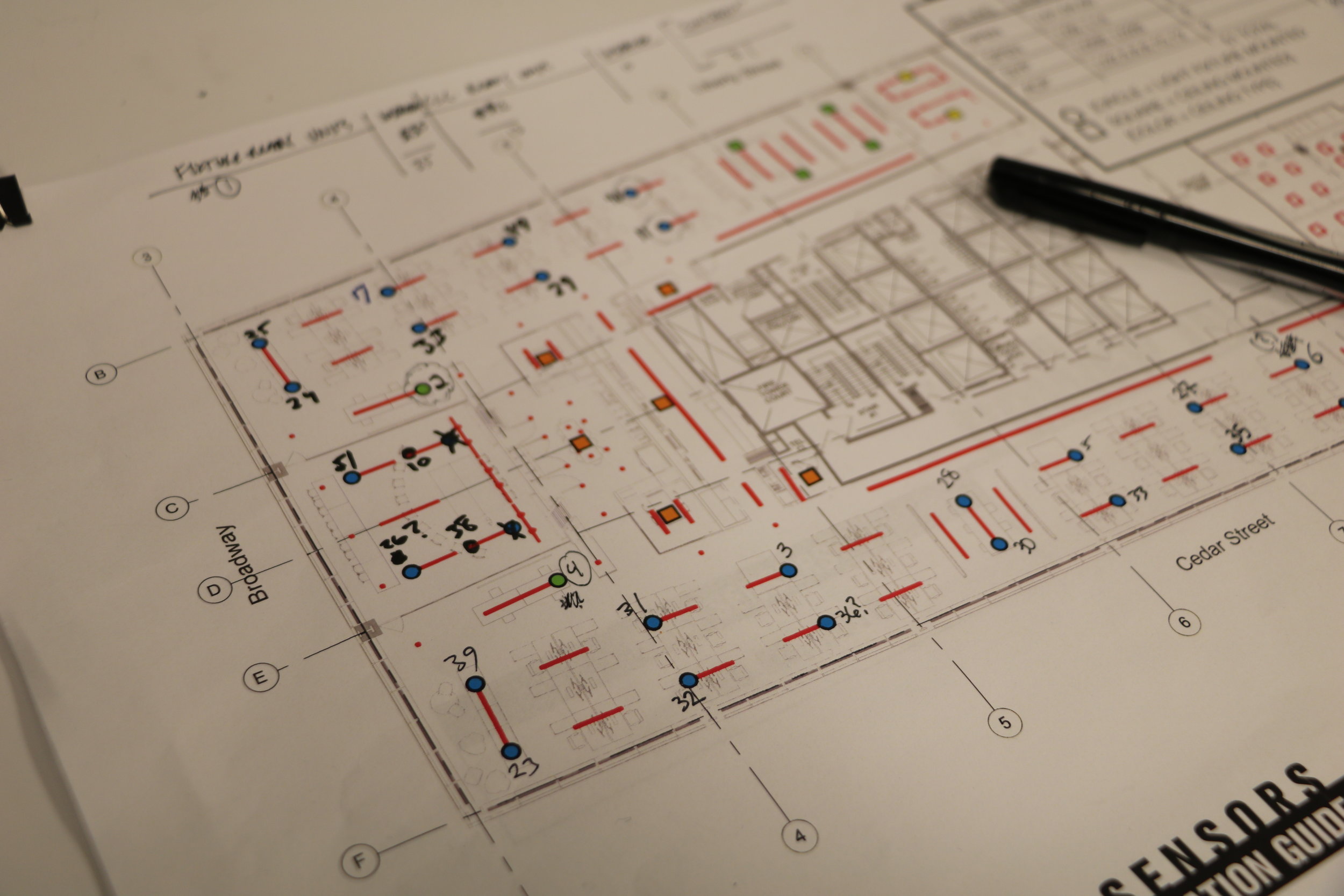Goldilocks Sensor Project
// nfo
NBBJ San Francisco/Seattle/New York
2015-2016
// role
project lead
front end engineer
// key activities
concept design
fundraising
project management
UX design
mobile app dev
product management
specifications
deployment
documentation
marketing materials
// tech
Particle (Raspberry Pi), Stratasys (3D printing), Rhino, Grasshopper, HTML, CSS, Javascript, D3, Angular, Ionic, Parse
// description
At one of our quarterly innovation hackathons, I led a team on the development of a sensor grid and mobile app prototype, which created significant excitement among the firm leadership on demo day. After a detailed feasibility study, the project was funded and eventually become the Goldilocks project, the first major technology R&D initiative at the firm.
The result is an Android/iOS mobile app that gives users access to realtime environmental data about their office environment, including sound levels, light, temperature, and motion. This app connects to a sensor network that we designed and built ourselves (including all the circuit boards and custom housings). Goldilocks was deployed in our NY office and consists of 51 sensor motes collecting realtime data and publishing to the cloud continuously.
Why did we build it? Consider this--over the last 10 years, access to large data sets through elegant user interfaces has changed the way we operate in the world. Access to taxi locations has changed mobility; access to microclimate data has changed the way we prepare for the day; and saturation of social networks has changed the way we connect with friends and family, meet new people, and find new jobs. And yet none of this exists at the scale of architecture. You can’t Yelp the coffee machine that keeps breaking down; you can’t check the traffic in conference room across campus; and you can’t check the temperature or noise levels of your favorite chill space on the south side of the building. Architecture is the last black box of personal mobile technology.
Project Goldilocks is an experiment in understanding how technology integration can change the way we experience space, and how architects can combine their traditional design expertise with a burgeoning set of skills in hardware, software, and product development. It is a tale of one architecture firm’s speculative venture into prototyping an end-to-end technology product completely in house -- including UX, hardware, and mobile app design and delivery.
The project also evolved an additional benefit to the NBBJ culture — the process I developed to pitch, validate, and implement that project was used on two subsequent R&D projects and formed the basis of a soon-to-launch firm-wide innovation fund that I will be overseeing with support from the firm leadership.
// status
Complete and operational













